How To Clean Tile Floors For Long-Lasting Performance
Learning how to clean tile floors will ensure your floors remain intact for years. Tile floors are beautiful and durable, and easy to clean. But, if you don’t clean them properly, the dirt can scratch tiles and ruin their appearance.
Also, grout can absorb the dirt, change color or darken, and becomes impossible to clean. Tile floors with dark grout make the entire room look filthy, despite how hard you clean it.
Cleaning tile floors isn’t rocket science. But, with a few tips here and there, you will get the most out of them.
Let’s cover everything about proper tile floor maintenance, including techniques for cleaning tiles and grout, tools, frequency, and cleaners!
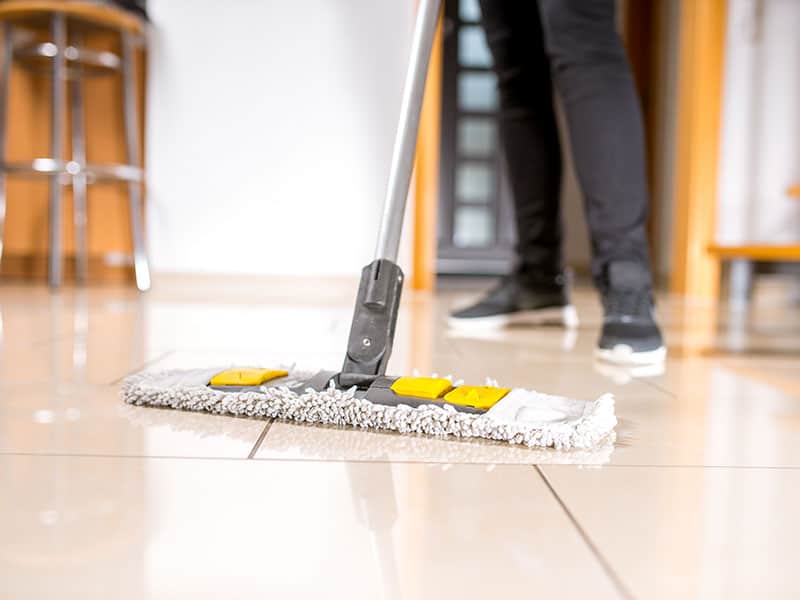
How To Clean Tile Floors?
Cleaning tile floors is simple. Stone tiles can be cleaned with dish soap, ceramic and porcelain tiles with vinegar-based cleaners and you can maintain grout lines with powder oxygen bleach.
- Sweep the floor or use a vacuum to remove loose dirt, dust and debris.
- Dissolve a suitable cleaning solution in a bucket of water and dip a mop into it.
- Wring the mop well and mop the tiles.
- Once you are done, let the floors air dry or dry them with a soft cloth.
- Saturate grout with a suitable grout-cleaning product and let it sit.
- Use a detailed brush or a toothbrush to scrub the dirt from the grout.
- Rinse with a clean, damp towel and dry grout lines with a towel.
Types Of Tile Flooring
There are several types of tile floorings, based on materials used for tiles. Here is a quick overview of all types of tile flooring.
Ceramic & Porcelain Tile
Ceramic and porcelain tiles are manufactured from clay, but the difference is in the manufacturing process and blends of materials. During the process, clay is quarried and passed into the molds to create ceramic and porcelain tiles using different processing methods such as dry press and extruding.
Porcelain tiles include half clay and half feldspar, a special crystal that improves durability and hardness. Compared to ceramic tiles, porcelain tiles are pricier, have better water resistance and overall performance.
Ceramic and porcelain tiles are great for indoor applications, such as bathroom floors and walls.
Stone Tile
Stone tiles are made from quarried and slabbed stones cut in the shape and size of tiles. The most common stone types used for flooring are granite, marble, slate, limestone, travertine, etc.
They have a unique appearance and are great for high-traffic areas and kitchen floors. Some stone types, like granite, are dense and hard, while others, like marble, are more porous.
How To Clean Tile Floors Step-by-Step Guide
Cleaning tile floors is generally simple when you know the exact technique. The same technique applies to different flooring types, and the only thing that differs is the choice of cleaning products.
Things to Prepare
Cleaning tile floors require only basic tools. Here is what to prepare before you start cleaning:
- A vacuum or a broom
- Mop and a bucket
- Cleaning solution – commercial or homemade
Commercial Cleaners for Tile Floors
There are plentiful commercial cleaners suitable for tile floors on the market. They are usually clearly labeled for which floors to use them and what chemicals they include.
The old-time favorite Bona Cleaner for hard surfaces will be excellent for regular cleaning.
If your floors get dirty easily or you have pets, you might have better results with a bio-enzymatic cleaner such as Nature’s Miracle cleaner.
Watch this video to know more:
Homemade Tile Floors Cleaner
Before I share my favorite recipes for homemade cleaner for tile floors, remember to avoid vinegar and citrus-based cleaners on stone tiles. These cleaners are safe for ceramic and porcelain tile floors.
If your ceramic or porcelain floors are severely stained, you can try the following recipe.
You need:
- Rubbing alcohol – 1/2 cup
- White vinegar – 1/2 cup
- Dish detergent – five drops
- Peppermint oil – a few drops
- Hot water – 2 gallons
Mix everything in a large bucket and stir well to get the foam. Don’t forget to add peppermint oil if you have issues with ants.
Damp the mop in the solution and clean the floor. Rubbing alcohol will help remove tough stains, while dish detergent will eliminate grease and grime.
Once you are done, rinse with fresh water and let the floor air dry or dry them with a soft cloth.
Step By Step Cleaning Guide
Once you have everything prepared and within a hand reach, start with the dry cleaning, sticky grime removal and wet cleaning! Keep reading for detailed instructions.
- The first step is to remove loose dirt, soil and other debris.
- You can use a broom or any vacuum cleaner without a beater brush to vacuum the dust and dirt.
- If there is sticky grime on the tiles, you need to scrape it before you move on to the wet cleaning.
- Scrape it with a plastic putty knife. Don’t use a sharp knife or tools, because you can scratch the tile.
- The next step is mopping. Fill a bucket with warm water and dissolve any cleaner you have in hand.
- Use the cleaner sparsely, because too much cleaning solution can leave your floors looking dull.
- Damp the clean mop in the bucket with water and cleaner, wring it well and then go over the tiles.
- Spill the soapy water from the bucket, rinse the mop and fill the bucket with clean water.
- Damp the mop in clean water and rinse the floor.
- You can let the floors air-dry or dry them with a soft cloth to make them shinier. Drying the floors with a soft cloth will prevent water spots and streaks.
Watch this video to know more:
Cleaning Ceramic and Porcelain Tiles VS Stone Tiles
The easiest way to clean stone tile floors is to mix a few drops of liquid dish soap with half a gallon of water and mop the floor with it. Never use vinegar or acidic-based solutions on stone tiles because the acid can damage the top surface, discolor stone tiles and ruin their appearance.
Vinegar-based cleaners work great for ceramic and porcelain tiles. So, before you clean your tile floors, check what material your tiles are from and choose the correct cleaning solution accordingly.
How To Clean Tile Grout?
Cleaning dirt from tiles is simple compared to cleaning tile grout. Generally, grout keeps tiles in place and affects the entire look of the floors. There are specialized professional grout-cleaning machines available for renting in hardware stores.
But, if you maintain grout and clean it regularly, you won’t have to rent the machines. You can rent a grout-cleaning machine if you have just moved into a place with old tile floors, and the machine can help you restore it.
I’ll share with you my best method for cleaning tile grout, which proves to be effective repeatedly.
The most powerful thing to clean grout is powder oxygen bleach. I recommend it for filthy floors. But, if you are sensitive to chemicals, you can use lemon juice or vinegar and baking soda cleaners for regular maintenance.
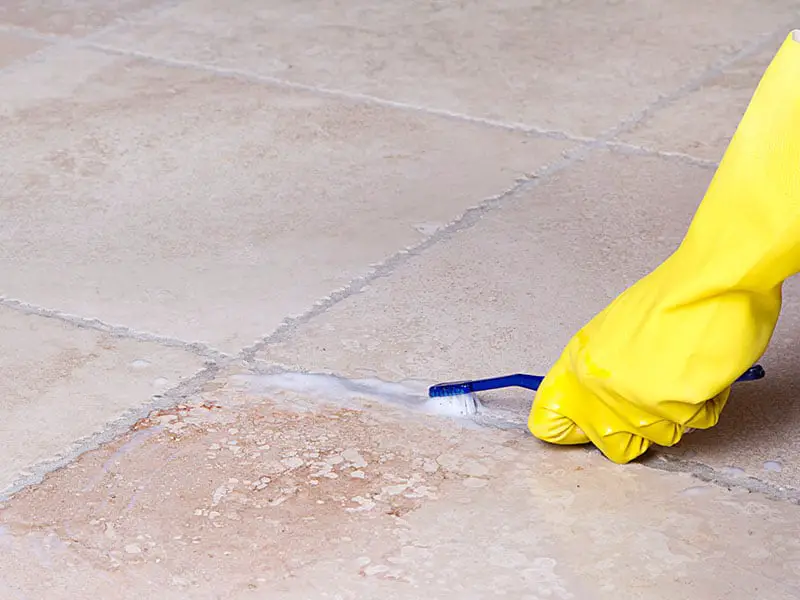
You’ll need:
- Powder oxygen bleach (non-toxic and color-safe)
- Spray bottle
- Soft brush
- Old toothbrush
- Bucket with water
- Towel
Here is how to effectively clean grout lines.
- Follow the instructions and dissolve bleach in water.
- Pour the solution into a spray bottle and spray it on the grout.
- Use a brush to apply the mixture on the dirtiest parts of the grout. Make sure the grout is well saturated in the solution.
- Let it sit for at least 30 minutes. The longer the bleach is left on the floor, the better the results are and the less scrubbing is required.
- Once you are ready to remove the bleach, use an old toothbrush to scrub.
- Keep a damp towel near you and work small parts at a time. Repeatedly scrub and sop the grout to remove the dirt.
- If necessary, apply more bleach with a brush.
- Once you cleaned the entire floor, rinse it with fresh water and dry it with a towel.
- The optimal step after cleaning is using a grout sealant to prevent new stains.
How Often Should You Clean Tile Floors?
The answer depends on several factors. An average household installs tile floors in the bathroom and kitchen the most often. Those are the areas where you want to keep the floors as clean as possible, especially if you have children or pets.
You can vacuum or sweep the floors every two or three days, or even sooner if the floors are dirty. Mopping once a week is enough for the average household.
You can steam-clean the floors once in two months with a steam cleaner.
But, if there are stains, spills and high traffic on your tile floors, consider cleaning and disinfecting them more often.
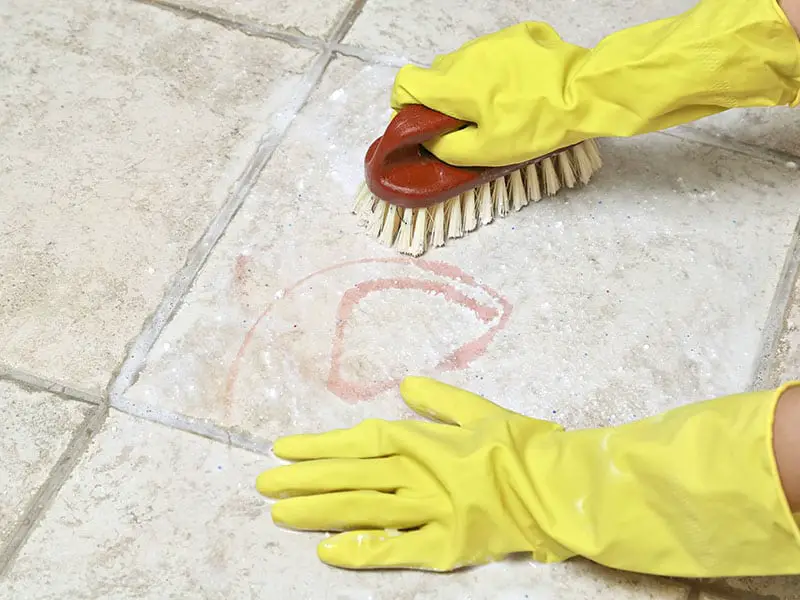
Watch this video to know more:
DIY Or Professional Tile Floor Cleaning?
DIY tile floor cleaning is standard and simple cleaning that will help maintain the look and performance of your floors for a long time.
If you maintain your tile floors properly from installation, you won’t need to hire someone to clean the floors for you.
Professional tile floor cleaning is an option for people who don’t want to struggle with restoring the look of the floors and removing old stains.
Professionals use special machines, steam cleaners, brushes and chemicals to safely restore the look of the tile floors. A professional cleaning service can prolong the lifespan of your tile floors.
Hiring professionals to clean your tile floors can be a great idea if you have just moved into a property with tile floors that haven’t been maintained properly for years.
FAQs
Let’s clear out some potential doubts you might have about proper tile floor cleaning!
Long-Lasting Tile Floors with Straightforward Maintenance
As you can see, tile floors are easy to clean. Their surface doesn’t stain easily and doesn’t require expensive cleaning tools and products.
In most cases, all you need is a broom, bucket, mop, dish soap or vinegar. Don’t forget to pay special attention to grout lines, especially if those are light-colored.
What is the most difficult cleaning challenge you faced so far? I bet, it wasn’t a tile floor!
If you have more tips for cleaning tile floors, please share them!
Like and share the article if you enjoyed it!
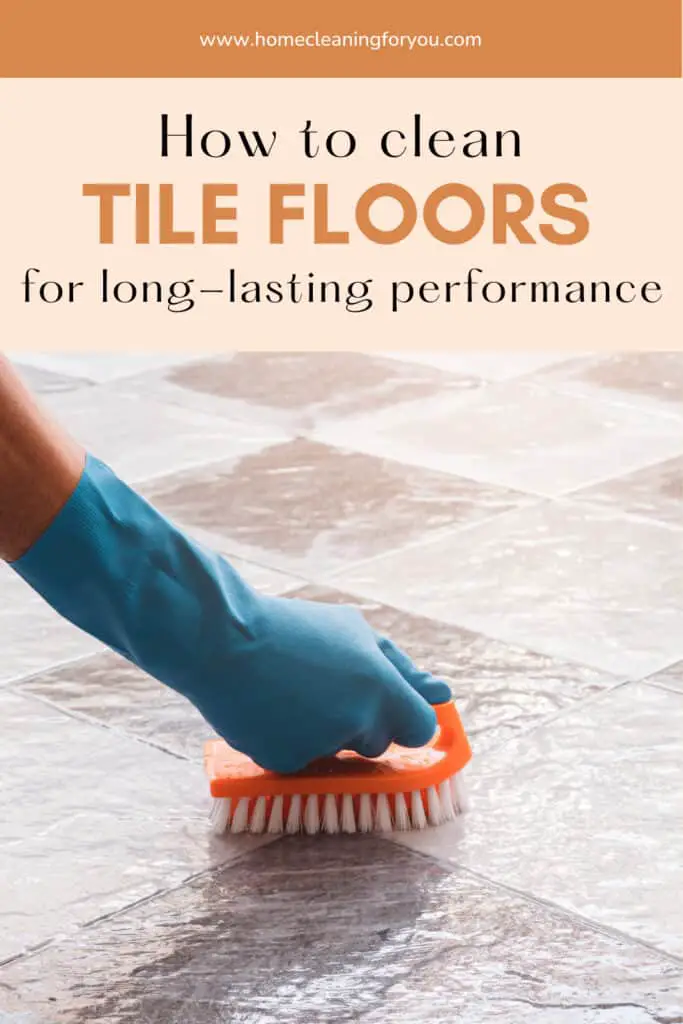


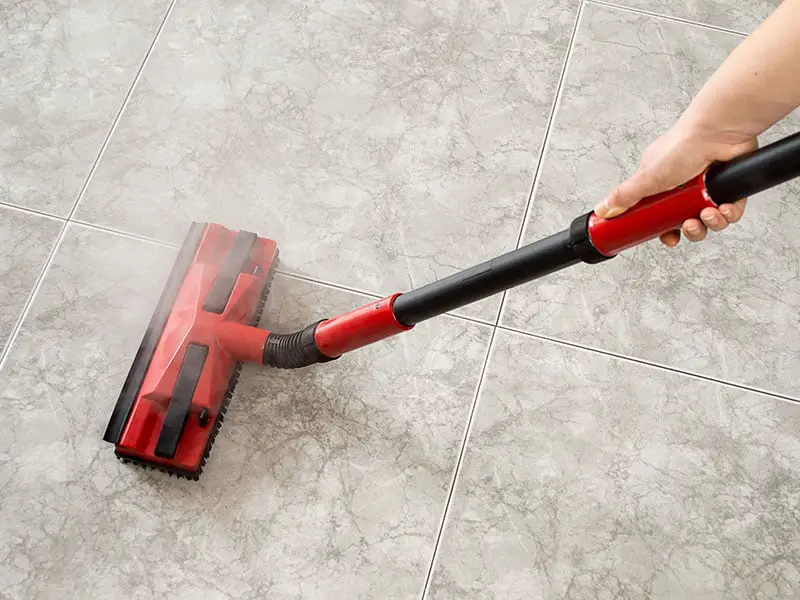
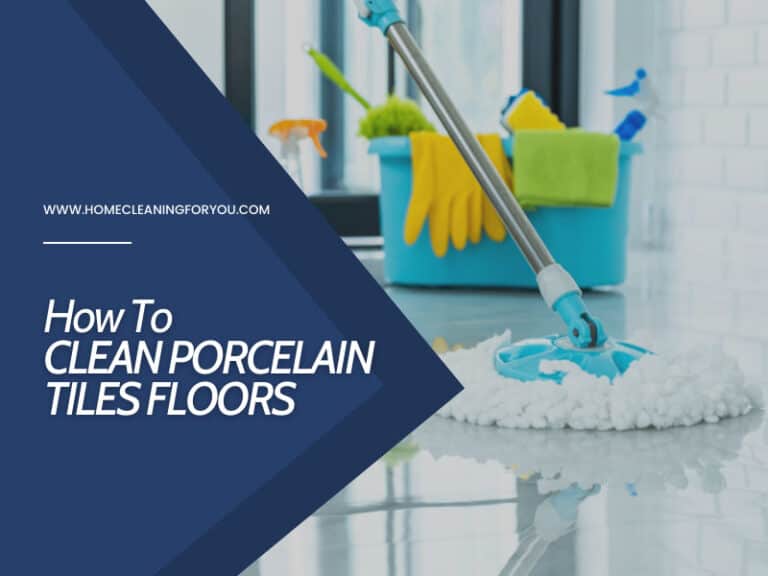
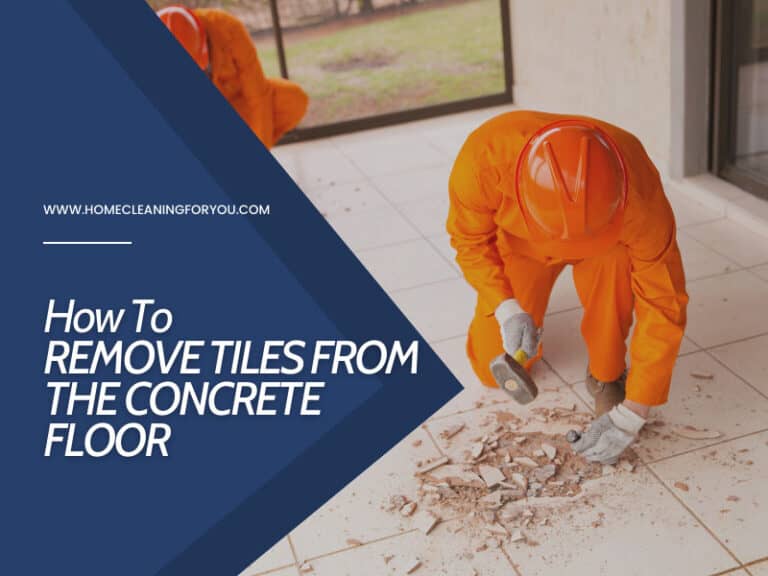
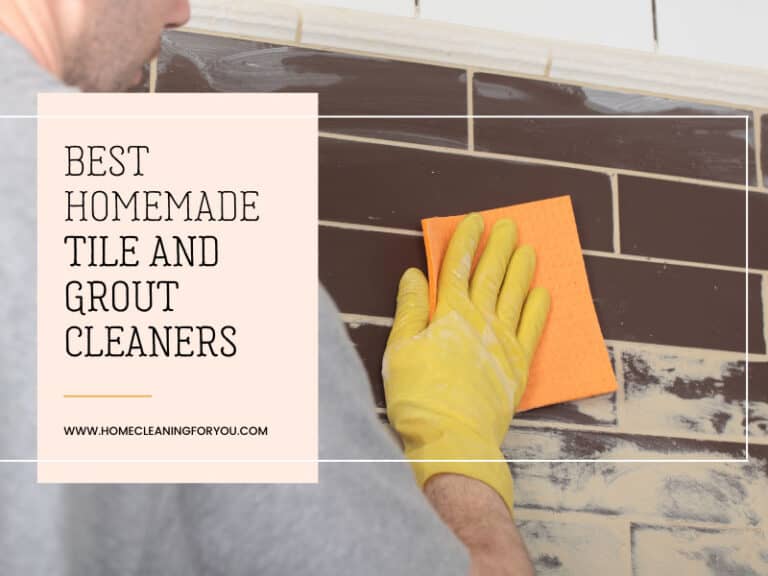
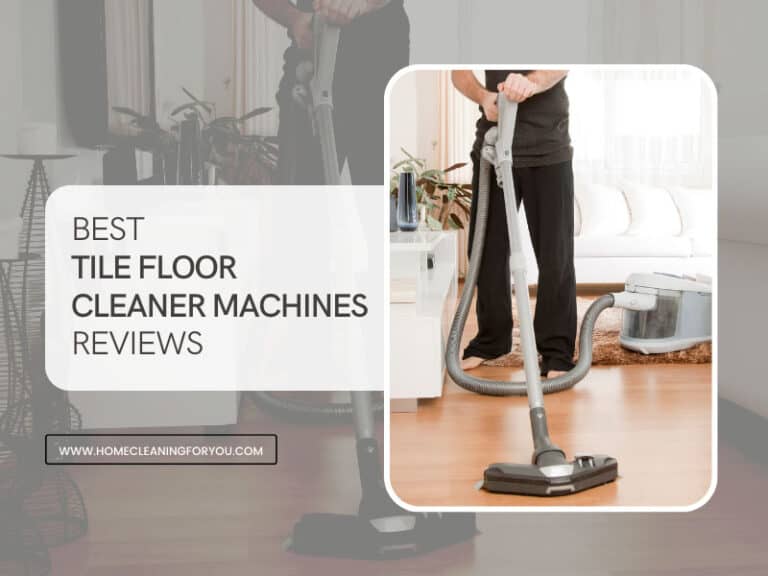
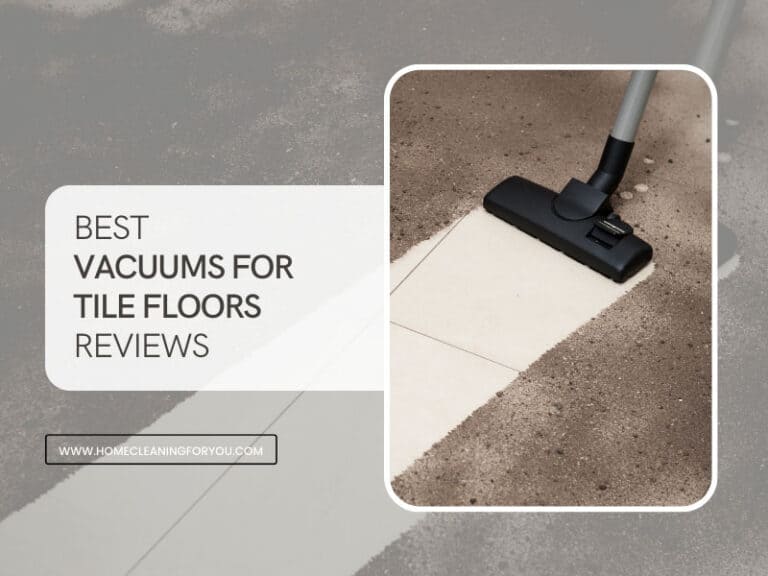
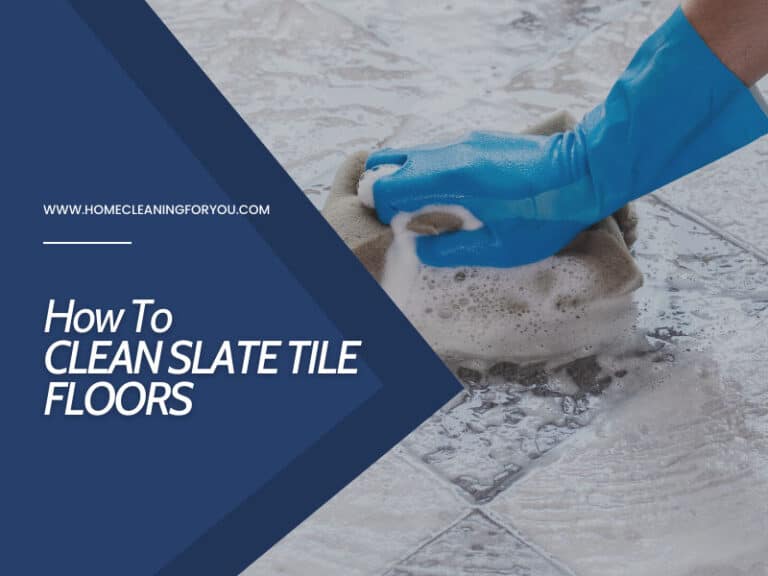
Kevin Jones
Home Cleaning Specialist
Expertise: In-depth Knowledge of Cleaning Agents and Their Uses, Advanced Home Sanitization, Techniques Expertise in Cleaning and Maintaining, Various Floor Types, Innovations in Home Cleaning Tools
School: American College of Home Economics
Kevin Jones is a seasoned home cleaning specialist with over a decade of experience in the industry. A stickler for cleanliness and organization, Kevin brings a systematic and innovative approach to home maintenance. His expertise ranges from traditional methods to modern cleaning technology, ensuring homes are not just clean but healthy environments too.